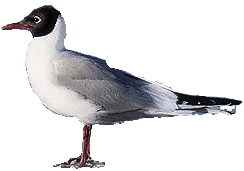A short history of British Seagull.
Early History
The ‘MARSTON’ SEAGULL.

The earliest engines to carry the 'SEAGULL' name were the 'Marston' Seagulls. They were produced by the 'Sunbeam Motorcycle Company’ Sunbeamland, Wolverhampton in 1931. The original engine was designed by Marston engineers as an industrial engine. Later entrepreneur, John Way-hope, a former Evinrude employee and Bill Pinniger a design engineer, took over the engine manufacturing rights and patents in the very early years, maybe after working together at the Sunbeamland factory? They subsequently enlisted the help of Robert Harper with gearbox design alterations. British Seagull was born. There are some queries as to where they all worked and who was really responsible for what, sadly all seems to have been forgotten or muddied with time. What we do have is several people with inventive minds and business skills starting a dynasty....
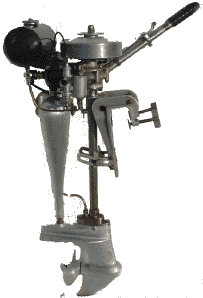
In 1931 a 'Standard' Marston Seagull, 1 & 1/2 bhp engine, would have cost you £26!
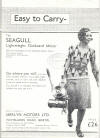
This advert was sent to me by Charles Palfreeman, thanks Charles.
It was a 78cc. engine, direct drive to a two bladed propeller. The main distinguishing feature was the cast aluminium exhaust, of elongated pear shape, with a hand-operated valve on the port side to release backpressure for starting. The magneto was by 'Villiers', and very similar to the later version used till 1968/9. Early versions had a 'fixed' timing, but without a positive locating recess in the crankcase housing, so could be set anywhere!! Later versions, 1933 on had a variable advance and retard, but still no locating recess.
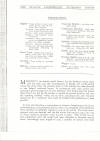
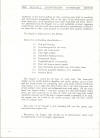
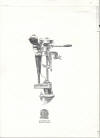
More pages sent in by Charles Palfreeman, thankyou.
The cast gearbox/lower exhaust was a work of art in itself, all aluminium and very streamlined. In these early models the water pump was mounted forward of the gearbox, of the propeller shaft. Accessed via the front end of the gearbox. Some models had even a streamlined propeller boss nut. The drive system was protected by means of a brass shear pin behind the propeller, very much as is used by many outboards today. The 'British Seagull Spring' not being introduced till the 102 models, starting in 1935, with the 'A' model, (later to be the 'AC', when fitted with a clutch.)

The carb was an 'Amal', the 'Amalgamated Carburettor Co,' Birmingham. Very similar to the later 'Amal' two jet carbs used till the 1980's'.
The fuel tank was a steel cylindrical tank of about 4 pints capacity, with welded mounting lugs, bolting directly to the cast iron cylinder, and a 'bayonet' type fitting, fuel cap, on a retaining chain! The tank interior was zinc plated and apparently gave very little rust problems.
The mounting bracket was an all aluminium affair with almost the same thumbscrews as were still used in 1987!!There was a hand adjustment for the steering friction, and another for the engine rake, very easy to use.
Approx 400 were produced each year from 1931 to 1934. Engine Numbers started 'OA' (outboard series ‘A’). Little record of engine numbers and dates exists, unfortunately. Some specials may have been made up from spares, with variable ignition, extra cylinder head cooling etc. These engines may not have had numbers.
In 1934 a model was produced with a reversing gearbox, the 'Super British Seagull', but discontinued in 1935, after research with customers revealed the extra weight of the reversing gearbox was superfluous.


The motor above is a Marston 'OF' owned by Andy and pic by Charles Palfreeman. Does anyone know what the device on top of the carb is supposed to do?
In 1936 the company moved to Bristol as the Bristol Motor Boat Co. The former sole concessionaires for Great Britain had also been in Bristol, Merlyn Motors Ltd. of Whiteladies Road. They moved to 87, Alma Road, Bristol 8. Owned now by Bill Pinniger and Way-Hope.
In about 1938 they moved to Hamworthy, then by 1939 they were in Poole.
This is a very early British Seagull advert (click on it to enlarge). It features Bill Pinniger and his wife in 1938! I am indebted to Mrs. Ann Walch, Nee Pinniger, their daughter, for this information and picture. The motor of course is one of those 102 models he designed!
The 102 cc. engine that continued till 1979 was introduced in 1935. At first it was a direct drive, but a clutch drive model was soon introduced. This engine had the water fed down to a block on the outside of the exhaust, discharging some water into the exhaust tube, thus cooling and silencing the engine (this practice was repeated by accident in later years, when an engine was built in the factory for test purposes, and someone forgot to blank off the stud holes in the cylinder block, thus allowing water directly into the exhaust tube! It worked, so in later engines, including the 'QB' series, between 1987- 1995, exhausts were built with part of the water discharging this way.)
The 102 engines were produced in huge numbers for the Second World War effort, for 'light assault craft', also as pontoon bridge building, barge and as a general use outboard. Some of these are still in active service, today, in 1996, however, some spares are getting scarce. The W.D. models have a 13inch propeller.
In about 1976/77, the Ministry of Defence released several hundred of these engines on to the market; all were preserved and crated, ready to ship!! I well remember seeing two of these engines along side the A 13 near the Police station in Rainham, Essex, where a local scrap merchant used them as a display out side his gate! They seemed huge!
A few twin cylinder versions of 340c.c were built in the early Marston days, with a power output of 10bhp., it was available with and without a clutch! (apparently a prototype version of this engine was scrapped in the late 1970's, when one of the then directors fell over it, in the factory!) Has anyone still got one? (Yes we have heard of several now see the Marston pages.)
The company moved to 'Fleetworks', Poole in Dorset in 1938. The name 'Marston' was dropped and the company renamed 'British Seagull', with that phrase, ' The best Outboard Engine for the World'.
I was pleasantly surprised to learn that the parent company still existed in Wolverhampton, in 1996 as I.M.I. Marston, and that they had an original 'Marston Seagull’ proudly on display. (I too have a restored a 1931 Marston Seagull).
2011 I have had more information, from Mark Walker apparently the company is now known as H. S. Marston and can date its heritage back to 1740 and Mr Edward Perry who set up a Japanning works there. John Marston went to work there as an apprentice! I have also been sent a couple of PDF files that I will try and attach.
Acknowledgement for much of this information must go to Robert Cordon-Champ, who has researched the Sunbeam Motorcycle, to the old British Seagull company, especially Mike Gregory and Mark Fishwick of Classic Boat. If you can add to what I have gleaned I would be very interested.
January 2006, I had this mail in from Robert Cordon-Champ, a little snippet on Mr. Marston himself!
Dear John,
Herewith a little background for your SOS site.
John Marston (1836-1918) was a Victorian industrialist who started as an apprentice with Edward Perry, Japanner and Tinsmith of Wolverhampton (then) in Staffordshire, England. Having served his time, Marston
worked in neighboring Bilston and found the money to take Perry's over when Edward Perry died in 1871.
Perry had made domestic ware such as spice-boxes, tea-caddies and snuff-boxes mostly black-japanned ( a stoved enamel paint finish which preceded modern enamel paints) and often lined-out in gold leaf.
Marston continued this, adding brass and copper ware to build a reputation for quality of manufacture which is still recognised by collectors in this field.
As a keen tricyclist himself, it was a logical development to move into the embryo cycle trade in 1887, under the trademark of 'Sunbeam' with the new company of John Marston Ltd. literally alongside Perry's original works in Pool St. and Paul St. Wolverhampton just off the Penn Rd.. ( At the time of writing the works are still standing)
'The Sunbeam' (Not just Sunbeam but THE Sunbeam!) became a beautifully made cycle with most of its works' enclosed and lubricated in the 'Little Oil-bath Chain-case' and finished in gleaming Japanned finish with the traditional 24ct gold-leaf lining on the expensive 'Golden' model. These cycles are highly prized today, one of the company's famous customers being Sir Edward Elgar, composer of Land of Hope and Glory.
In order to manufacture the many machined parts needed for cycle production, Marston set up The Villiers Engineering Co. Ltd. in Villiers Street with his son, Charles Marston, in charge. Villiers became the largest maker of two-stroke motor cycle engines in the UK, their name appearing on many thousands of flywheel magnetos as well. John Marston Ltd. made the company's first Sunbeam car in 1897, at the same time becoming a major vehicle radiator maker, and their first Sunbeam motor cycle in 1912. Sunbeam also made lorries, 'buses and aircraft engines.
In 1928 and 1929 the motor cycles won the Senior TT races in the Isle of Man and the next new product was the Sunbeam 'British Seagull' outboard motor, finished in black with gold lining and made in the same factory as the TT bikes, with machining done at Villiers.
The war loomed, however, and now as part of ICI, Marstons began to sell off their products and transfer to mostly aircraft component work. The cycles and motor cycles went to AMC of London in 1937, then to BSA in 1943. The Sunbeam cycle, to the 1892 basic design, was made until 1957.
Hope this helps,
Bob.
Thanks Bob!
This snippet sent to me in 2025 from Dave Halsted. He found this in an old Yachting magazine!
Thanks Dave.

Above is an extract from a British Seagull advertising leaflet of the 1960's.

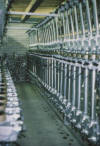

Above are photos given to me by British Seagull staff in 1996. They show racks of British Seagulls ready to go. Date, 1977. At that time it is estimated there were up to 80,000 a year leaving the factory! From my reckoning I would think there were well over a Million British Seagulls made, some estimates are over twice that number, no wonder there are a lot about still!
John S. Williams (Saving Old Seagulls.)
To E-mail SOS john@saving-old-seagulls.co.uk
(or phone 01621 778859)
If I am not answering the phone, this might give you a clue to where I might be!

Please look through the 'FAQ' page first, you might find what you need there.
Try also the 'I. D. your British Seagull' pages, before mailing queries to me, as I now have to spend much time answering your e-mails! That, of course, keeps me from the workshop! UK queries may be better by phone, as I can ask you those extra little questions that might solve a problem easier. (Like why your 102 has a century plus gearbox!)
